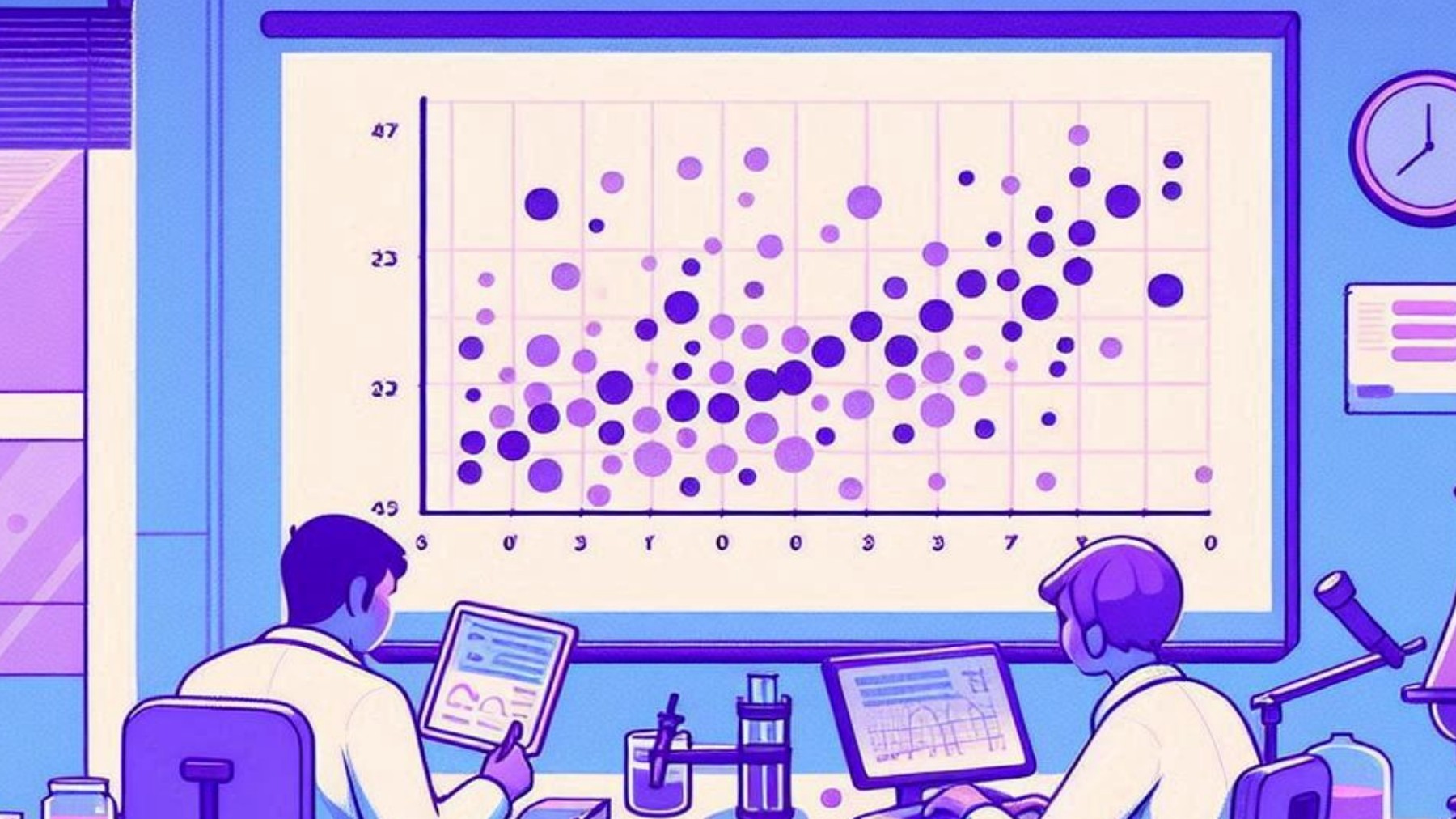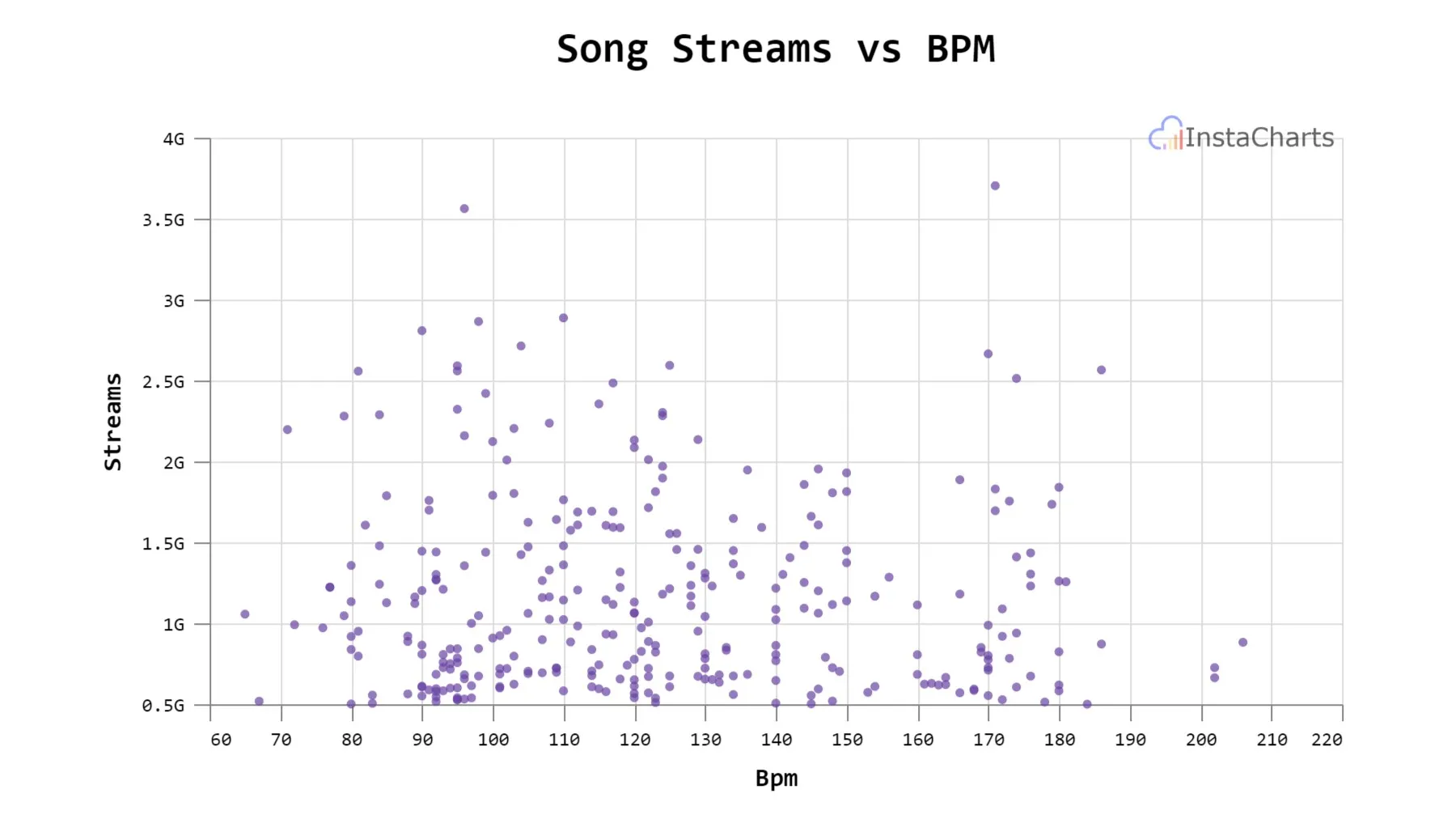When to use a scatter plot chart
Use a scatter plot chart to quickly visualize the relationship between two numeric values

What is a Scatter Plot Chart?
A scatter plot chart is a type of data visualization that uses dots to represent data points. The position of each point on the horizontal and vertical axes indicates the values of an individual data point. Scatter plots are often used to observe relationships between variables.
When to use a scatter plot chart
Scatter plots are appropriate to use when:
- You have two numeric variables.
- Your dependent variable may have multiple values for each value of your independent variable.
- You are trying to determine whether two numeric variables are related.
- You want to identify outliers or patterns in numeric data.
- You want to compare two or more groups of numeric data.
Scatter plots are often used in scientific fields to visualize the results of experiments. They can also be used in business and other fields to identify and analyze trends in numeric data.
When to use a scatter plot chart over other charts
Scatter plots are often the best choice for visualizing data when you want to see the relationship between two numeric variables. However, there are other types of charts that may be more appropriate in certain situations.
For example, if you want to compare two or more groups of data, you may want to use a bar chart or line chart. If you want to show the distribution of a single variable, you may want to use a histogram or box plot.
Here is a table that summarizes when to use a scatter plot chart over other types of charts:
| Chart type | When to use |
|---|---|
| Scatter plot | To visualize the relationship between two numeric variables. |
| Bar chart | To compare two or more groups of data. |
| Line chart | To show the trend of a variable over time. |
| Histogram | To show the distribution of a single variable. |
| Box plot | To show the distribution of a single variable, including outliers. |
When choosing a chart type, it is important to consider the type of data you have and the goal of your visualization. If you are unsure which chart type to use, a scatter plot is often a good starting point.
Examples
Here are some real life examples of when to use a scatter plot chart:
A scientist wants to study the relationship between the temperature of a chemical reaction and the amount of product produced. The scientist could create a scatter plot with temperature on the x-axis and amount of product produced on the y-axis. The scatter plot would allow the scientist to see if there is a correlation between the two variables.
A marketing manager wants to study the relationship between the amount of money spent on advertising and the number of products sold. The manager could create a scatter plot with advertising spending on the x-axis and number of products sold on the y-axis. The scatter plot would allow the manager to see if there is a correlation between the two variables.
A teacher wants to study the relationship between the number of hours students study and their test scores. The teacher could create a scatter plot with number of hours studied on the x-axis and test scores on the y-axis. The scatter plot would allow the teacher to see if there is a correlation between the two variables.
Scatter plots are a versatile type of chart that can be used to visualize data in a variety of ways. They are especially useful for identifying relationships between variables.
Tips for creating effective scatter plots
 This scatter plot chart plots a song’s beats per minute vs its number of streams
This scatter plot chart plots a song’s beats per minute vs its number of streams
Here are some tips for creating effective scatter plots:
- Choose the right variables. Scatter plots are best used to visualize the relationship between two numeric variables.
- Use clear and concise labels for the axes. The labels should indicate what the variables are and what the units are.
- Scale the axes appropriately. The axes should be scaled so that the data points are evenly distributed.
- Use different colors or symbols to represent different groups of data. This will make it easier to see the relationship between the groups.
- Add a trend line or regression line to show the overall trend in the data.
- Add a title and subtitle to the chart to explain what the chart shows.
Scatter plots are a powerful tool for visualizing data and identifying relationships between variables. By following these tips, you can create effective scatter plots that will communicate your insights to others.
Create a scatter plot chart in InstaCharts
InstaCharts is an online chart maker that helps you create professional-looking charts in seconds. The AI Chart Assist powered by InstaCharts takes many of the above elements under consideration when creating or recommending charts.
Create informative scatter plot charts from your spreadsheet files, for free. Try the demo or sign up for a free account!.